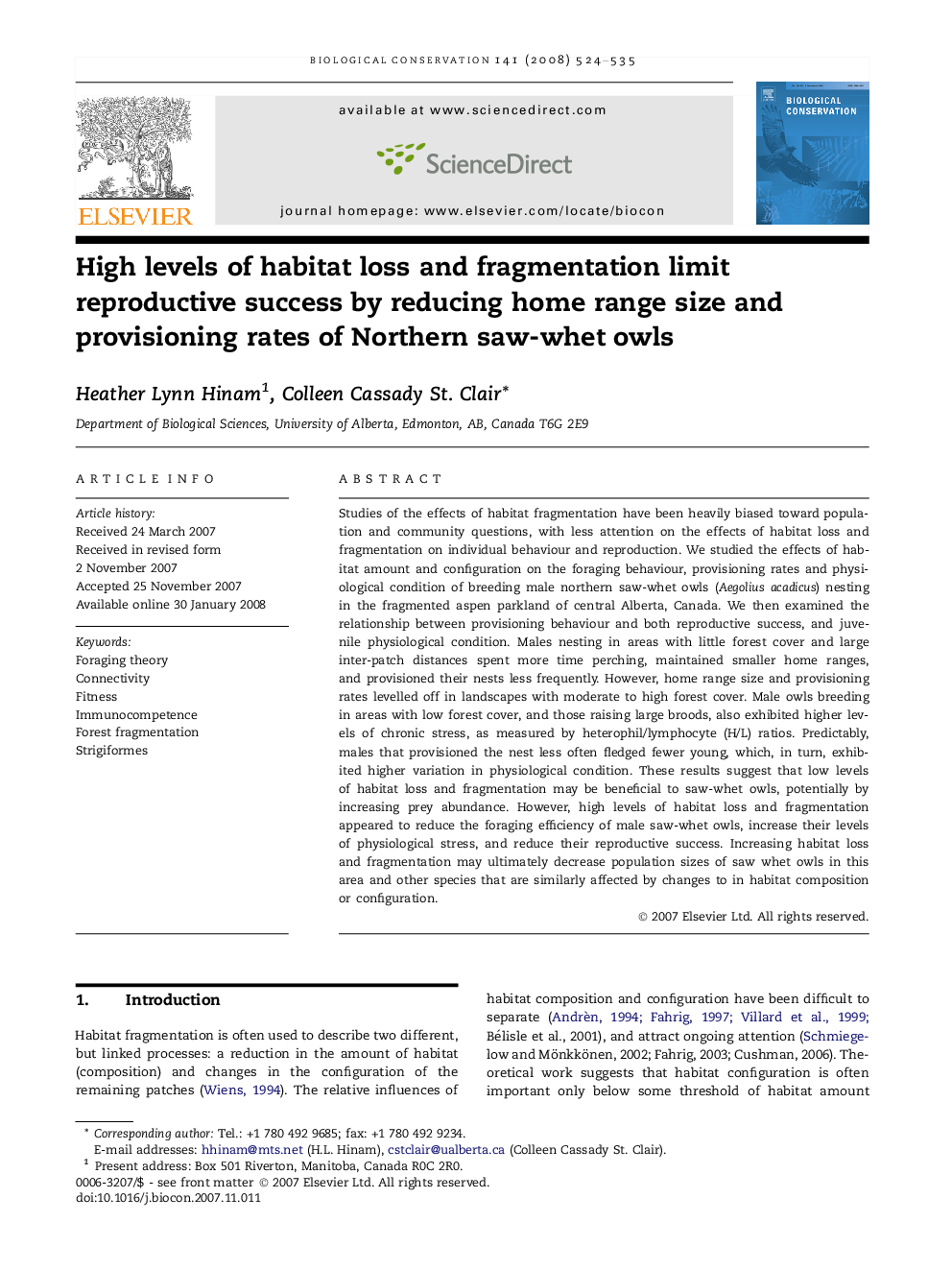| کد مقاله | کد نشریه | سال انتشار | مقاله انگلیسی | نسخه تمام متن |
|---|---|---|---|---|
| 4386924 | 1304582 | 2008 | 12 صفحه PDF | دانلود رایگان |

Studies of the effects of habitat fragmentation have been heavily biased toward population and community questions, with less attention on the effects of habitat loss and fragmentation on individual behaviour and reproduction. We studied the effects of habitat amount and configuration on the foraging behaviour, provisioning rates and physiological condition of breeding male northern saw-whet owls (Aegolius acadicus) nesting in the fragmented aspen parkland of central Alberta, Canada. We then examined the relationship between provisioning behaviour and both reproductive success, and juvenile physiological condition. Males nesting in areas with little forest cover and large inter-patch distances spent more time perching, maintained smaller home ranges, and provisioned their nests less frequently. However, home range size and provisioning rates levelled off in landscapes with moderate to high forest cover. Male owls breeding in areas with low forest cover, and those raising large broods, also exhibited higher levels of chronic stress, as measured by heterophil/lymphocyte (H/L) ratios. Predictably, males that provisioned the nest less often fledged fewer young, which, in turn, exhibited higher variation in physiological condition. These results suggest that low levels of habitat loss and fragmentation may be beneficial to saw-whet owls, potentially by increasing prey abundance. However, high levels of habitat loss and fragmentation appeared to reduce the foraging efficiency of male saw-whet owls, increase their levels of physiological stress, and reduce their reproductive success. Increasing habitat loss and fragmentation may ultimately decrease population sizes of saw whet owls in this area and other species that are similarly affected by changes to in habitat composition or configuration.
Journal: Biological Conservation - Volume 141, Issue 2, February 2008, Pages 524–535